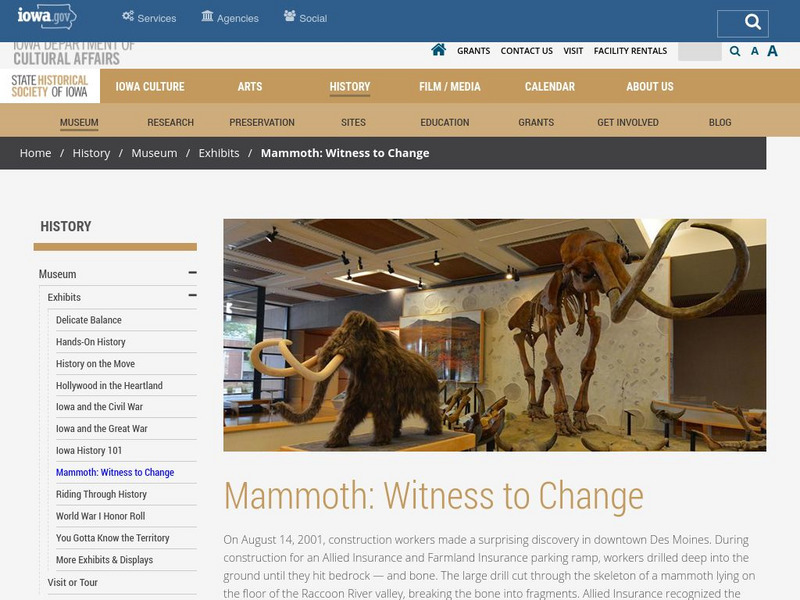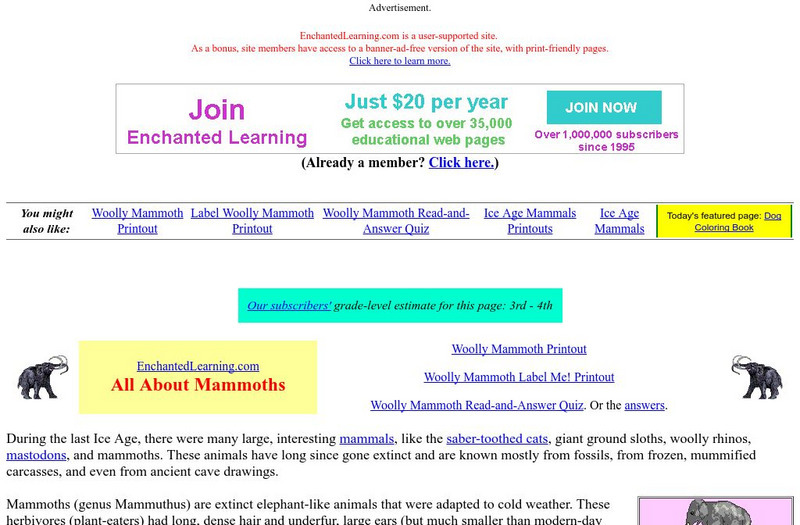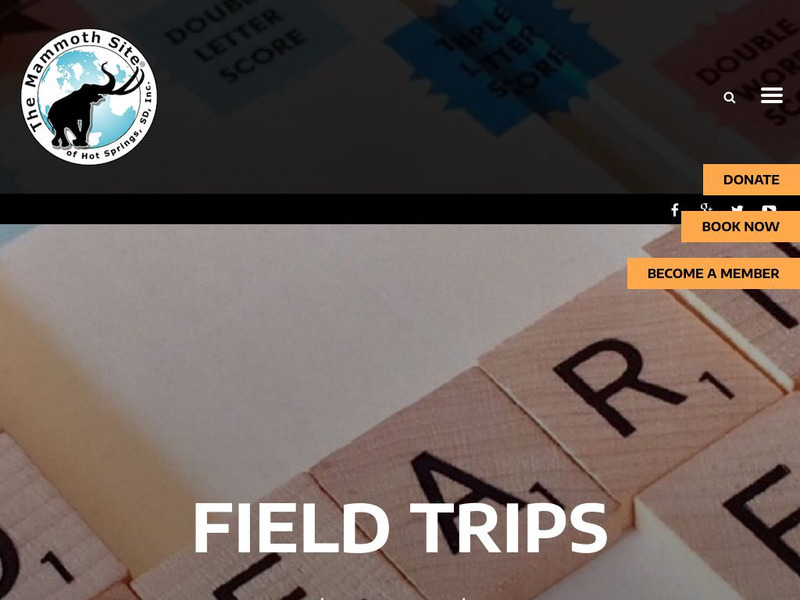Curated OER
Investigating the Mammoth Mystery
Fourth graders go on a virtual dig to find out where the mammoth bones found in a rural U.S. county came from. They determine whether the bones were created by humans or were they the actual remains of mammoths who walked the area during...
Other
Illinois State Museum: The Midwestern United States 16,000 Years Ago
What did Northern America look like 16,000 years ago? Were the plants the same? What happened to the mastodons and the saber-toothed cats? Here's a short website that is easy-to-understand and supplies at least some of the answers.
Texas A&M University
Csfa: Circum Pacific Research by the Csfa
Center for the Study of the First Americans at Texas A & M University is researching many different sites across North America looking in to theories of "Clovis First" and "Pre-Clovis" as to who were the first people to inhabit North...
San Diego Natural History Museum
San Diego Natural History Museum: Fossil Field Guide: American Mastodon
A detailed look at what fossil evidence unveils about the life and ecological interactions of the extinct American mastodon.
Other
State Historical Society of Iowa: Mammoth: Witness to Change
An exhibition documenting the discovery of two mammoths and a mastodon, found in Wisconsin and Iowa. The Hebior mammoth was particularly significant as the excavation showed evidence that the mammoth had been killed by humans. Background...
Other
Yukon Beringia Interpretive Centre: Research: American Mastadon
Uncover discoveries from the past by learning about the prehistoric American mastodon. Includes information about the time period, physical characteristics, fossil specimens, feeding habits, and habitat.
Other
The Mammoth Site of Hot Springs, South Dakota
General site describes history and origin of the Mammoth. Includes links to paleontology, geology and archeology sites that are related to the study of the Mammoth.
Enchanted Learning
Enchanted Learning: All About Mammoths
Use this site to find out where mammoths lived, what they looked like and where they lived. Includes a woolly mammoth printout and other links.
Indiana University
Indiana University Bloomington: Geo Notes: Indiana's Ancient Elephants [Pdf]
Describes the fossils of mammoths and mastodons that have been found in Indiana.
University of Illinois
University of Illinois Extension: Animals Past and Present
In English and Spanish this site deals with animal life in Illinois past and present. With sections on dinosaurs, animals in Illinois 65 million years ago, animals in Illinois 10 million years ago, and animals in Illinois today, this is...
Encyclopedia of Life
Encyclopedia of Life: American Mastodon
The Encyclopedia of Life presents this in-depth overview of American Mastodons (Mammut americanum), including their habitats, size, conservation status, and much more. Images of this species and maps of its global distribution can also...
Canadian Museum of Nature
Canadian Museum of Nature: American Mastodon
Did you know that the upper tusk on the mastodon extended 2 metres (7ft)? This is just one of the interesting facts presented about this mammal that was one of the largest living animals during the ice age.
EL Education
El Education: What Is a Mastodon?
An online book entitled What is a Mastodon? by kindergarten students at Genesee Community Charter School in Rochester, New York. The book contains information mastodons including what they looked like, how they ate and drank, and how...
Other
Mammoth Site Geology
This is the website for The Mammoth Site in Hot Springs, South Dakota. The Mammoth Site boasts the largest concentration of mammoths in the world. You can tour this indoor active dig site and view Ice Age fossils. The site offers a video...
Math Science Nucleus
Math/science Nucleus: Mammoth Mary Animation
This animation, in a storybook format, discusses a wide variety of prehistoric animals from the mammoth to the mastodon.














